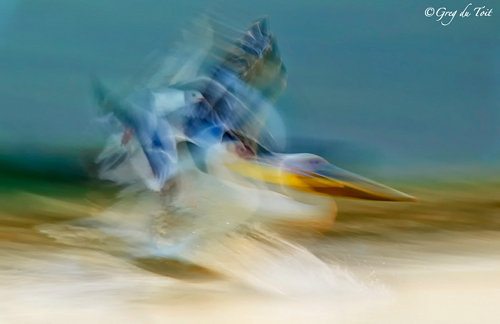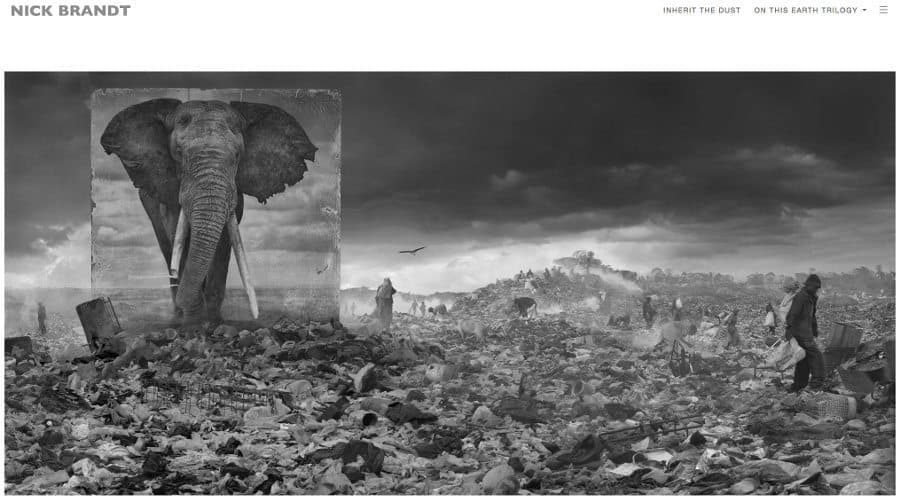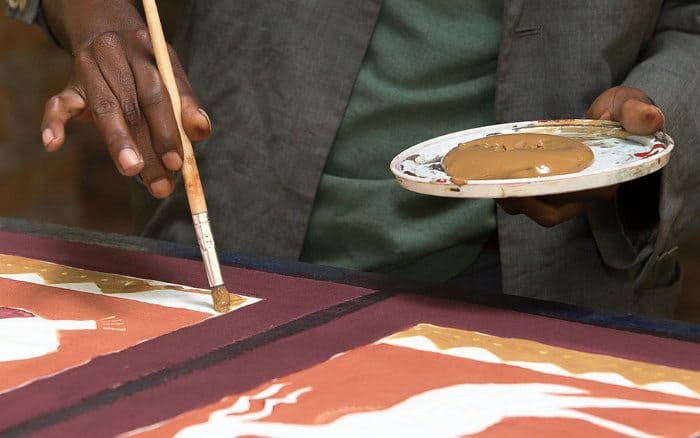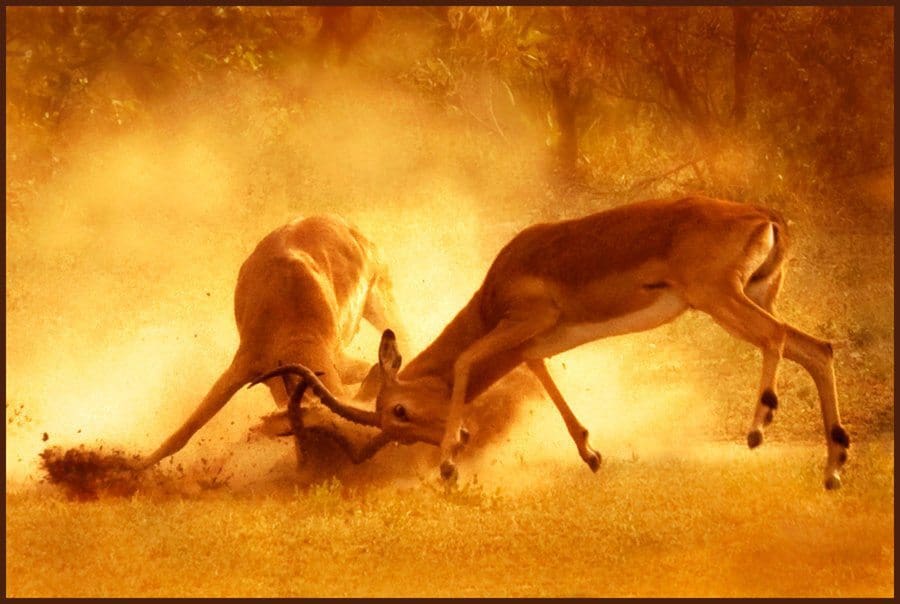An interview with Greg du Toit, South African wildlife photographer and photographic guide.
Hi Greg, thanks a million for taking the time to chat with us. It’s a real honor to have you contribute to Africa Freak. 🙂
1. If you only had a few words to describe yourself, what would they be?

It is my pleasure. Mmmm, I was expecting photography questions. How long can my answers be?
In a few words, I am a fine art wildlife photographer and specialist photographic guide based outside of South Africa.
2. Has wildlife photography always been a passion of yours? Please take us back to your childhood if you don’t mind.
How did you end up doing what you do today?

No, I have not always been a photographer. In fact, I only first picked up a camera 10 years ago. But, ever since I was a young boy, I have been madly passionate about nature and specifically the bush.
As a young 10 year old, I would race home from school and go straight to the CNA bookstore where I would spend hours paging through wildlife and bird books. I could tell you the name of every bird in both the Robert’s and Newman’s bird book!
I also vowed at a young age to work in the bush. Straight from school, having just turned 18, I went to work in the Lowveld bush of South Africa for no pay.
Photography was born many years later out of wanting to share this deep passion for the African bush with others.
3. Apart from wildlife, are there any other aspects of photography that interest you? People, places, landscapes perhaps?

No, not really. Due to the fact that photography was birthed from a passion for the bush, I am mostly interested in photographing wildlife! I have also been very privileged to spend time in some of Africa’s top spots for big game and predators.
As a result, I photograph mainly mammals and predators! Who wants to go to the Masai Mara to photograph birds, hey?
Having said this though, nature in all forms speaks to me. I do regularly enjoy browsing through the work of top North American photographers whose images of woods, snow and rivers simply inspire me.
4. Do you only focus on African subjects? In other words, do you ever venture outside Africa for photographic assignments?

This is a great question considering that next month I am off to Finland, where I will make my way up to the Arctic Circle and sit in a hide close to the Russian border.
To access this no-man’s land, you need a permit and you also need to sleep in the hide as the game is wild and shy (due to hunting). But, there is the chance of photographing brown bears, wolves and wolverines!
I want to do more international projects like this in the future!
5. Give us a flavour of what you do on a daily basis? Do you have any specific routine? Periods of high workloads/low workloads?
Seasonal work maybe?

Ok, I wake up and need caffeine instantly. I take my coffee seriously and I have a selection of Italian and Kenyan espresso beans which I grind (not chop) and which I drink at least 4 of per day. With steaming coffee I sit down and clear my mailboxes.
After that, I like to work on whatever project I am currently busy with. These three hours of my day are when I get my best work done! I am only home half of the time though.
The other half of my time sees me out in the field with camera in hand. I undertake my own private photo trips and I also do a lot of safaris and workshops. There are definite peaks for safaris.
September/October is the time of year when the great migration is in the Masai Mara and this year I will be in the Mara for a total of 4 weeks.
In February/March I head down to the Serengeti for the calving and I was down there for 6 weeks this year.
May/June is the time of year when I spend a lot of time in the South African Lowveld photographing leopards.
December and January is catch up with wife time! 🙂
6. What is your secret for taking such awe-inspiring shots? Any “success recipe” to share with all our amateur photographers out there?
What would your top 5 photography tips be?

Firstly I need to say that I find wildlife photography incredibly difficult and when I photograph I do NOT feel like ‘poetry in motion’.
In fact, often times I feel pretty pathetic so I appreciate you referring to me taking ‘awe-inspiring’ shots.
My top 5 tips are:
Tip 1: Almost all aspects of wildlife photography are out of your hands. The light, background, subject and subject’s behaviour are all out of your control.
To be a wildlife photographer you need to appreciate the difficulty of the art and you need to maintain a sense of humour.
Tip 2: Learn to see what your camera sees and not what you want it or think it should see. You do this by taking thousands of pictures.
Tip 3: Try to develop your own style instead of copying other photographers. Your unique style will emerge over time.
Tip 4: Generally people are good at what they are passionate about. Photograph things that you are passionate about.
If you are not passionate about weddings, don’t photograph them!
Tip 5: Don’t pay too much attention to equipment. A really good photograph can be taken with almost any camera. There is far too much emphasis on equipment (clever marketing).
So don’t fall into the ‘equipment lust’ trap and don’t think that a better camera will necessarily make you a better photographer.
Buy the best you can afford of any brand and get out there and shoot!
7. If you had to choose one specific safari destination, where would it be (and why)?

This is not a simple question. It depends on what you’re looking for. Africa is diverse and if you know it well, there are lots of great destinations.
The Masai Mara in Kenya is probably the number 1 photo safari destination though. It is just jam-packed with animal action and as a wildlife photographer that is exactly what one is looking for.
8. Your image titled ‘Crossing Frenzy’ toured the world as part of the 2009 BBC Wildlife Photographer of the Year exhibition. Can you put the picture back into context for us please?
Did you know, right from the moment you pressed the shutter, that you had made an incredible shot? Can you sense such things?

No, at the time of taking a winning photograph I am usually excited as the scene before me unfolds, but the action is also usually so thick and fast that at the time, you do not identify that one winning frame.
For the ‘Crossing Frenzy’ shot, I was flicking through my images later that night around the campfire. I noticed a frame that seemed mysteriously beautiful and I had a hunch that it might be a special one.
You never really know though until you get home and enlarge it on a monitor. Winning shots are often serendipitous by nature!
9. I can also recall the time you spent semi-submerged in a waterhole (for over 270 hours believe it or not), waiting for the perfect picture. How did you come up with such an “unusual” and rather “risky” approach to taking pictures?
I’m sure your insurance company must be pretty stressed out each time you venture on new adventures (and so is your beloved wife)… 😉
NB: Guys, don’t try this at home! 🙂

My approach to that project was born out of pure frustration! All I wanted was to capture images of free-ranging lions carrying out an existence beyond formal park or reserve boundaries.
Such lions are shy creatures and finally in a desperate attempt to mask my scent, I decided to leap into the water. The project took place over a period of 16 months and I am very pleased to have experienced seeing and photographing truly wild lions.
These free-ranging lions are nearly extinct in Africa, and Kenya itself has less than 2000 lions in total. Back in the 1970’s there were 200 000 lions in Africa. There are now less than 30 000. What is happening to our lion?
Yes, that project was a bit risky. I contracted some rather ‘interesting’ tropical bugs including a worm in my foot that would change location during the night.
What can I say, my wife is a legend! 🙂
10. Looking back at how your story has unfolded so far, is there anything you’d change along the way? Has the road been bumpy (besides the bumps from the potholes that is… 🙂 )?
Would you recommend living off your passion? As some people put it: “is the juice worth the squeeze”? 😉

Looking back is quite rewarding for me. It has not at all been an easy ride but I can now at least see the various chapters of my life as puzzle pieces and it is exciting to see the full picture starting to emerge.
So yes, the road has been bumpy but I would not change anything as each ‘bump’ has been necessary.
‘Is the juice worth the squeeze?’ I like the way you put it and it all depends on how you define the juice? Most people define the juice financially in which case wildlife photography is a dead loss.
You pay R60 000 (over $8500) for a camera and R100 000 (+ $14 000) for a lens and when you sell an image to a top local or international publication you get R350. You do the maths.
If you describe the juice as waking up in the morning and loving what you do, then yes, the juice is most definitely worth it!
11. Greg, it was a pleasure talking with you. Is there anything else you’d like to add? Perhaps mention some of your Africa Photo Safaris Workshops coming up?

Thank you for inviting me to share a bit about my life. Nothing to add really except that the beauty of God’s creation blows me away more and more each day.
You can catch all my news, safaris and images on my website gregdutoit.com.


